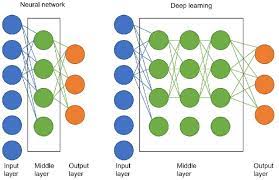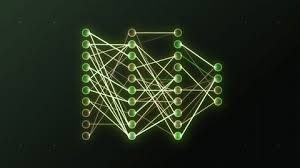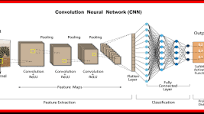Unlocking the Potential of Deep Learning Neural Networks
In the realm of artificial intelligence (AI), deep learning neural networks have emerged as a transformative force, revolutionizing a multitude of industries with their unparalleled ability to make sense of vast amounts of data. These neural networks are inspired by the structure and function of the human brain, and they have been instrumental in achieving significant breakthroughs in areas such as image and speech recognition, natural language processing, and autonomous systems.
What Are Deep Learning Neural Networks?
At their core, deep learning neural networks are a category of machine learning algorithms that utilize multiple layers of interconnected nodes or “neurons” to simulate the complex processes of human cognition. These layers are structured in a hierarchical manner where each layer is responsible for extracting increasingly abstract features from the input data. This architecture enables deep learning models to learn from experience and understand the world in terms of a hierarchy of concepts.
The Architecture Behind Deep Learning
The architecture of deep learning neural networks typically involves three types of layers: an input layer that receives the raw data, several hidden layers that compute and transform this data, and an output layer that delivers the final prediction or classification. The hidden layers are where most of the computation takes place, with each successive layer building on the previous one’s outputs.
One common type of deep neural network is the Convolutional Neural Network (CNN), which is particularly effective for tasks involving visual data. CNNs use convolutional layers to filter input data and identify spatial hierarchies in images. Another example is Recurrent Neural Networks (RNNs), which are designed for sequential data like time series or language, as they have feedback loops that allow information to persist over time.
Training Deep Neural Networks
The process of training these networks involves feeding them large amounts of labeled data and adjusting internal parameters through a method known as backpropagation. During backpropagation, the network calculates errors by comparing its predictions against true outputs. It then propagates these errors backwards through its layers to adjust its weights and biases—refining its model with each iteration.
This training process requires considerable computational power, especially for larger networks with millions or even billions of parameters. The advent of powerful GPUs (Graphics Processing Units) has been pivotal in enabling more complex models to be trained more quickly than ever before.
Applications Across Industries
Deep learning neural networks have found applications across various fields:
- In healthcare, they assist in diagnosing diseases from medical images.
- In automotive technology, they power self-driving cars’ perception systems.
- In finance, they detect fraudulent transactions by recognizing patterns indicative of illegal activity.
- In retail, they personalize customer experiences by predicting shopping preferences based on past behavior.
Challenges and Ethical Considerations
Despite their successes, deep learning models face challenges such as requiring large datasets for training and sometimes lacking transparency in their decision-making processes—a phenomenon often referred to as “black box” AI. Moreover, there are ethical considerations surrounding bias in AI if models are trained on skewed datasets or misinterpret certain inputs due to lack of diversity.
The Future Is Deep
As research into deep learning continues at an exponential pace, we can expect these neural networks to become even more sophisticated. Ongoing advancements aim at making models more efficient, less resource-intensive, and capable of unsupervised learning—learning patterns without needing labeled datasets.
The future holds great promise for deep learning neural networks as catalysts for innovation across all sectors. As our understanding grows deeper so does our potential to harness AI’s full potential—a testament to how these complex systems can mirror human intelligence’s depth and adaptability.
Five Essential Strategies for Enhancing Deep Learning Neural Network Performance
- Ensure you have a sufficiently large and diverse dataset for training your neural network.
- Experiment with different network architectures to find the one that best suits your problem.
- Regularize your neural network to prevent overfitting, using techniques like dropout or L2 regularization.
- Monitor the learning process by visualizing metrics such as loss and accuracy to make informed decisions on model improvements.
- Fine-tune hyperparameters such as learning rate, batch size, and optimizer choice to optimize the performance of your neural network.
Ensure you have a sufficiently large and diverse dataset for training your neural network.
To maximize the effectiveness of your deep learning neural network, it is crucial to ensure that you have a sufficiently large and diverse dataset for training. A comprehensive dataset not only provides the network with ample examples to learn from but also helps prevent overfitting and ensures that the model can generalize well to new, unseen data. By incorporating a wide range of data points representing different scenarios, variations, and edge cases, you can enhance the network’s ability to recognize patterns accurately and make informed predictions across various contexts.
Experiment with different network architectures to find the one that best suits your problem.
To optimize the performance of deep learning neural networks, it is crucial to experiment with various network architectures to determine the most suitable one for your specific problem. Different architectures, such as Convolutional Neural Networks (CNNs) or Recurrent Neural Networks (RNNs), offer unique strengths and are better suited for different types of data or tasks. By exploring and testing different network structures, you can fine-tune your model to achieve optimal results and effectively address the challenges inherent in your problem domain.
Regularize your neural network to prevent overfitting, using techniques like dropout or L2 regularization.
To enhance the performance and generalization of your deep learning neural network, it is crucial to incorporate regularization techniques such as dropout or L2 regularization. These methods help prevent overfitting by imposing constraints on the network’s parameters during training. Dropout randomly deactivates a certain percentage of neurons in each layer, forcing the network to learn more robust features and reducing its reliance on specific nodes. On the other hand, L2 regularization adds a penalty term to the loss function, discouraging overly complex weight values and promoting smoother decision boundaries. By regularizing your neural network, you can improve its ability to generalize well to unseen data and avoid memorizing noise in the training set.
Monitor the learning process by visualizing metrics such as loss and accuracy to make informed decisions on model improvements.
To optimize the performance of deep learning neural networks, it is crucial to monitor the learning process by visualizing key metrics such as loss and accuracy. By tracking these metrics throughout the training phase, developers can gain valuable insights into how well the model is learning and where improvements may be needed. Analyzing the trends in loss and accuracy allows for informed decision-making on adjusting hyperparameters, fine-tuning the model architecture, or implementing different optimization techniques to enhance overall performance and achieve desired outcomes.
Fine-tune hyperparameters such as learning rate, batch size, and optimizer choice to optimize the performance of your neural network.
To optimize the performance of your neural network in deep learning, it is crucial to fine-tune hyperparameters such as the learning rate, batch size, and choice of optimizer. These parameters play a significant role in determining how quickly and effectively your model learns from the data. Adjusting the learning rate controls the size of steps taken during optimization, while optimizing the batch size impacts how data is processed in each iteration. Furthermore, selecting the right optimizer can enhance convergence speed and model accuracy. By carefully tuning these hyperparameters, you can maximize the efficiency and effectiveness of your neural network for optimal results.




